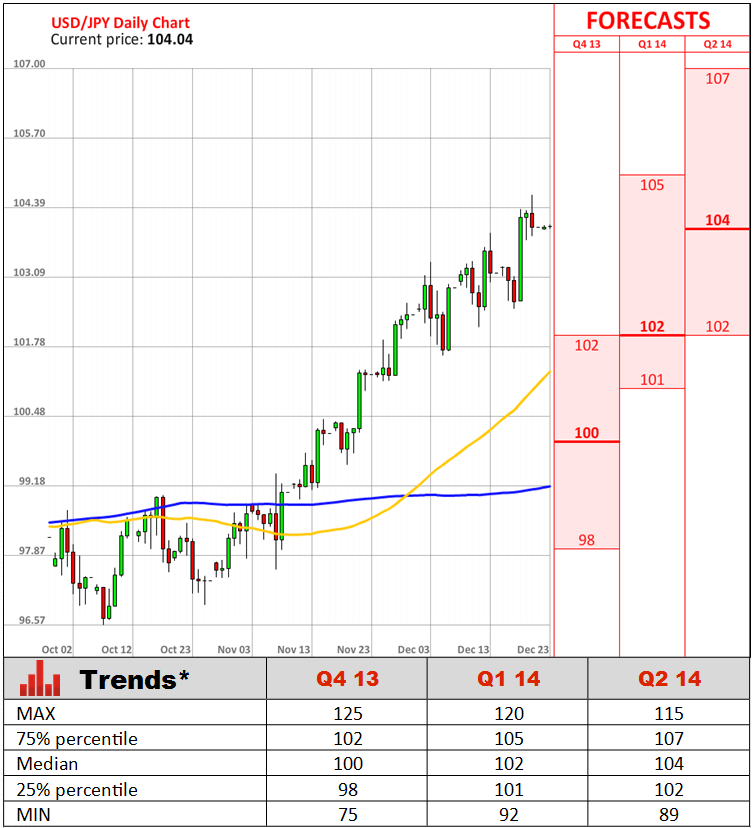Note: This section contains information in English only.

Mon, 23 Dec 2013 09:35:04 GMT
Source: Dukascopy Bank SA
"This is especially notable given the general fiscal environment, including the onset of the sequester in March, and the government shutdown and debt limit brinksmanship in October."
- Jason Furman, chairman of the White House Council of Economic Advisers
Finally, this nervous week is over. Investors can now breath out, as the Fed began tapering its stimulus. Market reaction, however, has been irritating and tedious. The most important thing is markets have finally received Bernanke's message, as he made absolutely clear two things he was trying to explain during the year. First of all, the tapering does not imply any chance interest rates will be anchored around zero. Moreover, rates will start rising only as soon as the economy reaches its full capacity and the employment is almost full.
Friday's data showed the U.S. economy finished this year in stronger place, posting a solid 4.1% growth between July and September, the fastest since late 2001. The previous estimate stood only at 3.6%. The main driver over the period were consumer spending, especially in the area of health care. While household spending jumped 2%, business increased investment as well. Moreover, government expenditures advanced for the first time in four quarters, sending another welcoming sign for the economy.
Analysts believe, the Fed will reduce the pace of its monthly purchases in $10 billion increment during the next seven meetings, before withdrawing the programme completely later in 2014. As soon as the growth will be stable around 3.5%-4% the Fed is expected to start considering raising rates.
© Dukascopy Bank SA
Actual Topics
Subscribe to "Fundamental Analysis" feed
Subscribe
Aby dowiedzieć się więcej o handlu Forex/CFD na platformie Dukascopy Banku, rynku SWFX oraz innych rzeczy związanych z handlem,
zadzwoń do nas lub poproś o oddzwonienie.
zadzwoń do nas lub poproś o oddzwonienie.
For further information regarding potential cooperation,
please call us or make callback request.
please call us or make callback request.
Aby dowiedzieć się więcej o Opcjach Binarnych w Banku Dukascopy / platformach handlowych Forex, SWFX, oraz innych,
zadzwoń do nas lub pozostaw prośbę o oddzwonienie.
zadzwoń do nas lub pozostaw prośbę o oddzwonienie.
Aby dowiedzieć się więcej o handlu Forex/CFD na platformie Dukascopy Banku, rynku SWFX oraz innych rzeczy związanych z handlem,
zadzwoń do nas lub poproś o oddzwonienie.
zadzwoń do nas lub poproś o oddzwonienie.
To learn more about Crypto Trading / CFD / Forex trading platform, SWFX and other trading related information,
please call us or make callback request.
please call us or make callback request.
To learn more about Business Introducer and other trading related information,
please call us or make callback request.
please call us or make callback request.
For further information regarding potential cooperation,
please call us or make callback request.
please call us or make callback request.